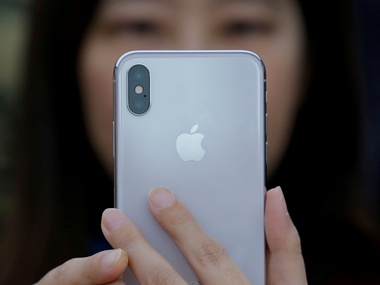After all the brouhaha over
tepid Apple iPhone X forecasts, it turns out that the iPhone X indeed was the most shipped smartphone in Q1 2018. [caption id=“attachment_4357579” align=“alignleft” width=“380”] A woman uses her iPhone X. Reuters.[/caption] According to a
report by Strategy Analytics, iPhone X shipped 16 million units, followed by iPhone 8 with 12.5 million units, iPhone 8 Plus with 8.3 million units. Samsung Galaxy S9 Plus was the sixth most shipped phone with 5.3 million units. And Xiaomi Redmi 5A was the surprise in this list, taking the 5th spot with 5.3 million units. The iPhone X shipments in Q1 2018 comprises almost 5 percent of the total smartphone shipments in this quarter. Strategy Analytics senior analyst Juha Winter said, “For the second quarter running, the iPhone X remains the world’s most popular smartphone model overall, due to a blend of good design, sophisticated camera, extensive apps, and widespread retail presence for the device.” Linda Sui, director at Strategy Analytics, added, “We estimate Xiaomi Redmi 5A shipped 5.4 million units for fifth place and 2 percent market share worldwide in Q1 2018. Xiaomi has become wildly popular across India and China. Xiaomi is selling a huge volume of smartphones through online channels, with key retail partners including Flipkart and JD.” [caption id=“attachment_4457101” align=“alignnone” width=“640”]
Global smartphone shipments. Image: Strategy Analytics[/caption] Overall, the smartphone shipments saw a decline. The smartphone vendors shipped 336.1 million units during the first quarter of 2018 — a 2.4 percent decline when compared to the 344.4 million units shipped in the first quarter of 2017, the
International Data Corporation (IDC) said. Apple’s first quarter saw the iPhone maker ship 52.2 million iPhones, representing a modest 2.8 percent year-over-year increase from the 50.8 million units shipped last year. Despite rumours of an underperforming iPhone X in the quarter, Apple stated that the iPhone X was the most popular model each week in the March quarter.
**Huawei** climbed to a new market share high of 11.7 percent even as it remained in third overall. At fourth place, Xiaomi’s strong performance has no doubt been owing to its strong growth outside of China with 1Q18 the first quarter that less than half of its shipments were domestic, a transition that very few Chinese companies have reached.
iPhone X shipped 16 million units, followed by iPhone 8 with 12.5 million units, iPhone 8 Plus with 8.3 million units.
Advertisement
End of Article


)
)
)
)
)
)
)
)
)



